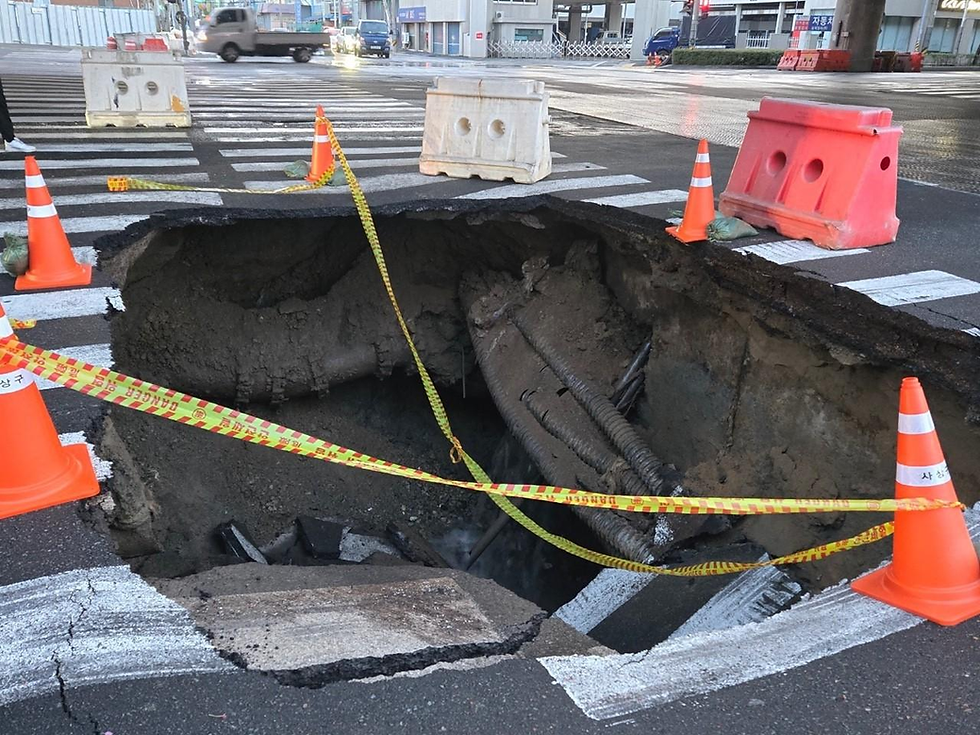Why Sinkholes in Korean Cities Are Becoming a Bigger Threat
- Chaerin Lee

- Apr 19
- 2 min read
April 19, 2025
By Chaerin Lee
A series of large-scale sinkhole incidents across South Korea have raised growing safety concerns among citizens. On March 24, a massive sinkhole measuring 20 meters in both width and depth opened in Myeongil-dong, Gangdong-gu, Seoul, resulting in the death of a motorcyclist. Earlier on March 11, a tunnel under construction for the Shinansan Line in Gwangmyeong, Gyeonggi Province collapsed, trapping two workers. One was rescued, while the other died. On March 13, separate sinkhole accidents occurred simultaneously at a subway construction site in Hakjang-dong, Sasang-gu, Busan, and in Ahyeon-dong, Mapo-gu, Seoul. More recently, on April 16, suspected sinkholes were reported near Apgujeong and Dolgoji subway stations in Seoul, prompting partial road closures. Investigations later confirmed that these were minor ground subsidence and potholes, with one depression measuring about 60 centimeters wide.
Sinkholes are typically caused by ground subsidence due to groundwater depletion, aging sewage systems, or poorly managed underground construction. In fact, nearly half of the 860 sinkhole cases reported nationwide over the past five years were linked to deteriorated sewer pipes. Between 2022 and 2024, over 2,500 sinkhole incidents were reported, with the numbers rising each year. A previously undisclosed “sinkhole risk map” created by the Seoul Metropolitan Government—initially kept private due to fears of declining property values and public panic—was eventually revealed by local media, identifying 50 high-risk zones.
Another issue is the current legal classification of disasters. Under the Framework Act on the Management of Disasters and Safety, the term “collapse” applies only to building failures, which means most sinkhole incidents are not officially recognized as social disasters. As a result, victims of sinkhole accidents are typically not eligible for compensation through the city’s public safety insurance. Experts argue that South Korea’s disaster laws and classification system need to be redefined to reflect the growing threat of sinkhole-related incidents.






